Metrics and Global Trends
Production capacities of bioplastic materials in 2020: non-biodegradable bio based vs biodegradable bio based
41.9% of the bioplastic materials produced in 2020 are bio-based, that is, of non-fossil origin although they are NOT biodegradable. Within this typology of materials of natural origin, PA (polyamide) and PE (polyethylene) stand out.
58.1% of bioplastic materials, in addition to being bio-based, are biodegradable and the most popular are PLA and other products derived from starch mixtures.
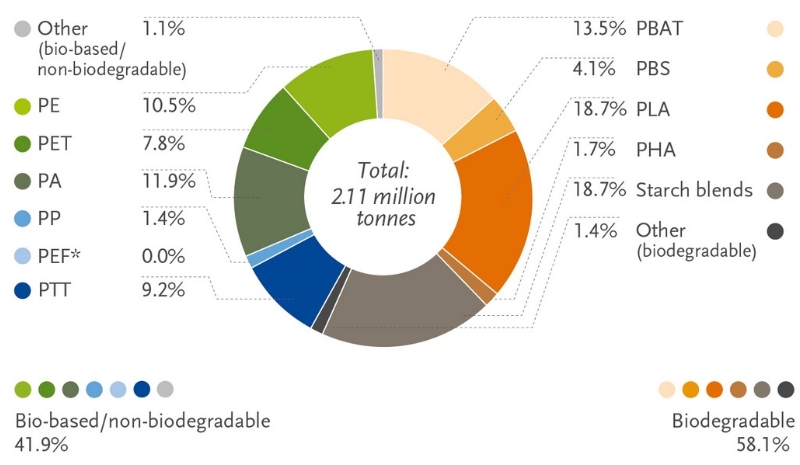
Comparison of the global production capacities of bioplastic materials in 2020 and 2025: non-biodegradable bio-based vs biodegradable bio-based
The production of bio-based and biodegradable materials will go from 58.1% in 2020 to 62.7% in 2025.
Within the bio-based and non-biodegradable materials, PA and PE will continue to be the most used and manufactured in 2025; On the other hand, within the biodegradable bio-based there will be an upward trend of PHA's (polyhydroxyalkanoates) and PLA's will reach 11.5% of the total bioplastics.
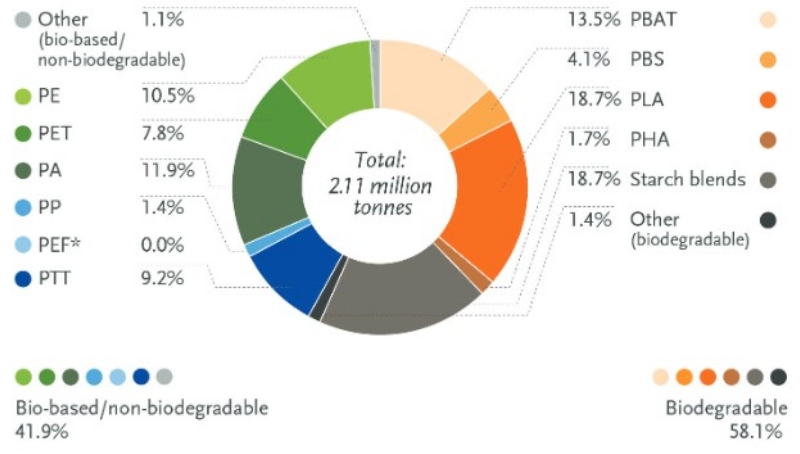
* PDF is currently in development and predicted to be available in commercial scale in 2023.
1 World plastics production 1950-2019 (estimation), Plastics Europe, 2020
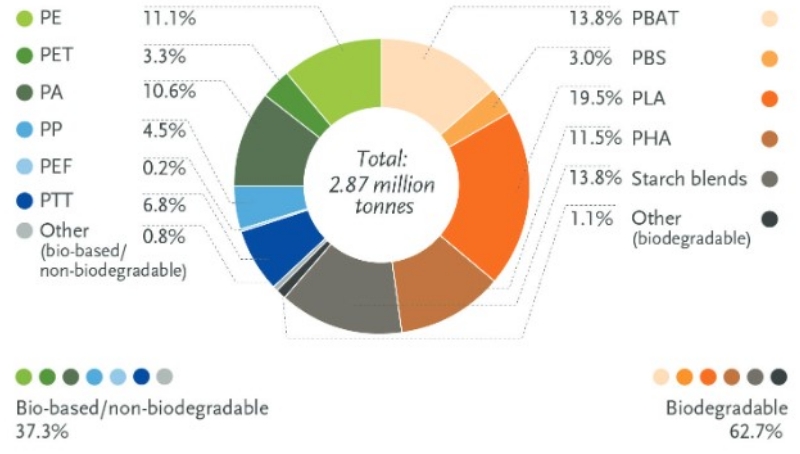
Global production capacities of bioplastics in 2020 by industrial sectors
47% of the bioplastic materials that were manufactured in 2020 were destined for the flexible and rigid packaging market, 12% for consumer goods and 11% for the textile industry.
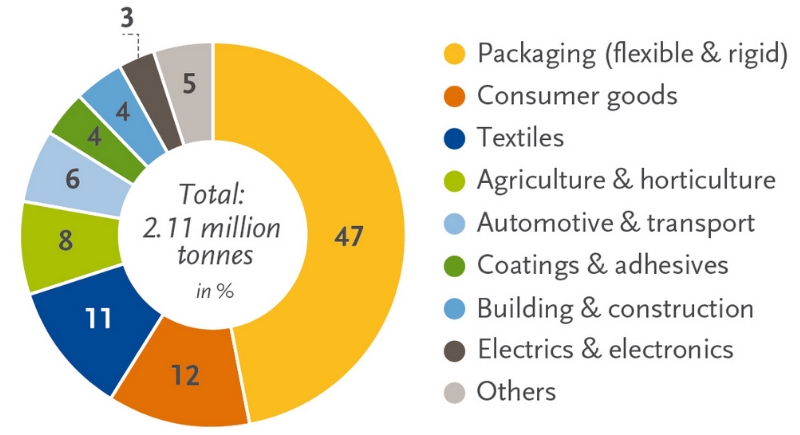
Global productive capacities of bioplastics in 2020 by region
46% of the worldwide production of bioplastics has been produced in Asia followed by 26% that has been manufactured in Europe.
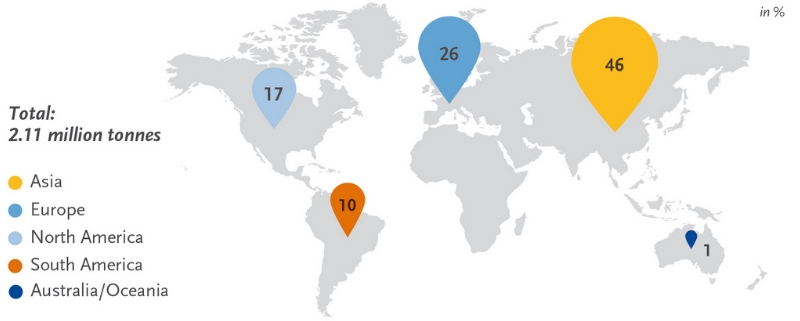
Evolution of global production capacities of bioplastics
The world production of bioplastics will go from 2.1 million tons in 2020 to 2.9 million tons in 2025. In addition, as shown in the graph, the manufacture of bio-based and biodegradable materials manufactured will always be expected to outperform the manufacture of bio-based but non-biodegradable materials.
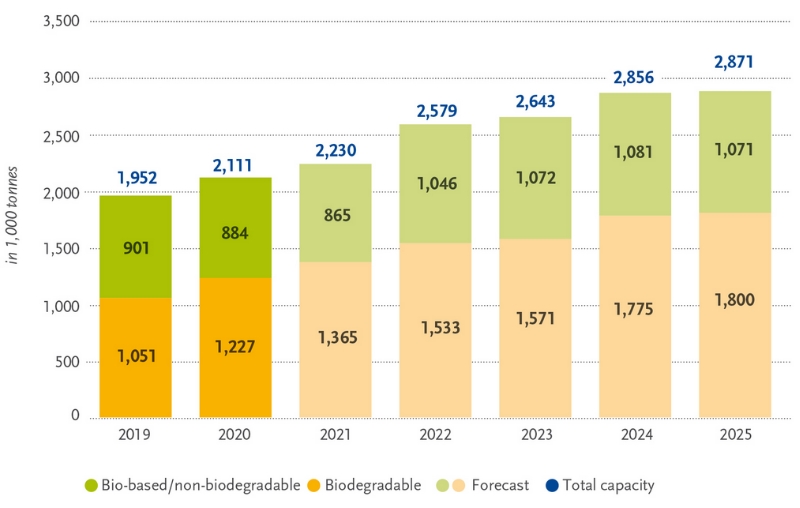
Global production evolution of bioplastics in 2020 by industrial sectors
The flexible and rigid packaging sectors lead by far the rest of the industrial sectors, with the following most demanded being the consumer goods and textile sectors.
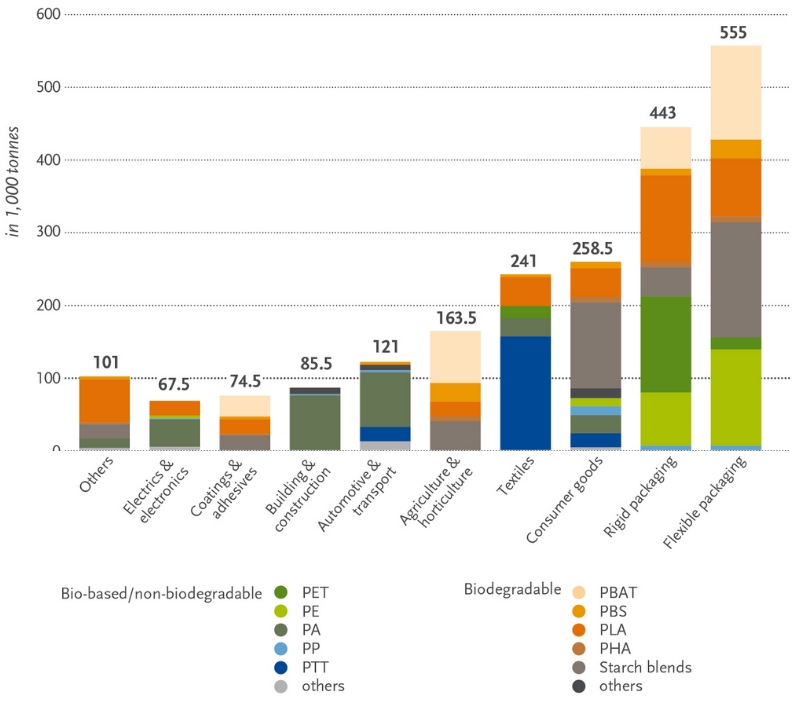
Font: European Bioplastics, nova-Institute (2020).
More information: www.european-bioplastics.org/market and www.bio-based.eu/markets
